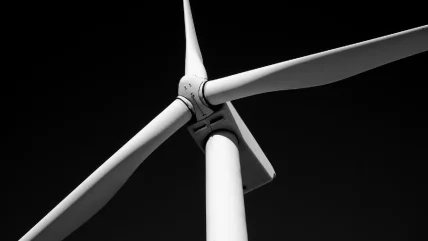
Today in crazy architecture news: a firm has designed a giant, circular wind turbine, which also happens to be inhabitable.
We can imagine a few potential objections – most obvious among them being, “What was that? I can’t hear you over the sound of the turbine.” But the wheel, planned for the port city of Rotterdam in southern Holland, would use a wind power technology with no moving parts, and should therefore be completely silent.
The electrostatic wind energy converter, developed in 2013 by a consortium of Dutch companies and academics, uses a combination of wind and water to generate power. Thin metal tubes across the turbine’s surface contain electrodes and nozzles which throw out a fine spray of water droplets. These are naturally attracted to the positive eletrodes, but are displaced by the wind blowing through the structure. This increases their potential energy, and it is this energy that can then be harnessed as electricity. Here’s a diagram:
Meanwhile, those rings around the turbine’s edge will be used for all sorts of things. The outer one, which, according to the project’s website, appears to be about 175m in diameter, will be filled with 40 “rotating cabins” on cables, to create a kind of very slow roller coaster ride, complete with (no sniggering at the back, there) an “interactive cinema trip through the history of the Dutch water management”.
The inner ring would contain flats, a hotel, and a restaurant:
Often, this kind of nod to sustainability on a grand new building is tokenistic – something thrown in to get the public onside and nudge along planning permission. London’s Strata SE1 building, for example, was designed oto include three grand-looking wind turbines at its apex. In practice, though, the turbines are never turned on because they’re too noisy for residents.
The Dutch Windwheel, however, both dodges the noise problem, and includes enough sustainable bits and pieces to persuade us that it’s not just for show. The water needed for the turbines is taken from the water which the whole building is submerged in, as well as through rainwater collection. The wheel is also topped with solar panels, and includes a system to convert organic waste into biofuel to power the building.
So far, the idea is just a proposal: potential backers may well be put off by the fact that the electrostatic converter is a relatively new technology, and has never been tested on this scale before.
Then again, their ears might prick up at the designers’ claim that the wheel could attract 1.5m visitors a year – all, presumably, lured by the promise of the interactive water management cinema experience.






